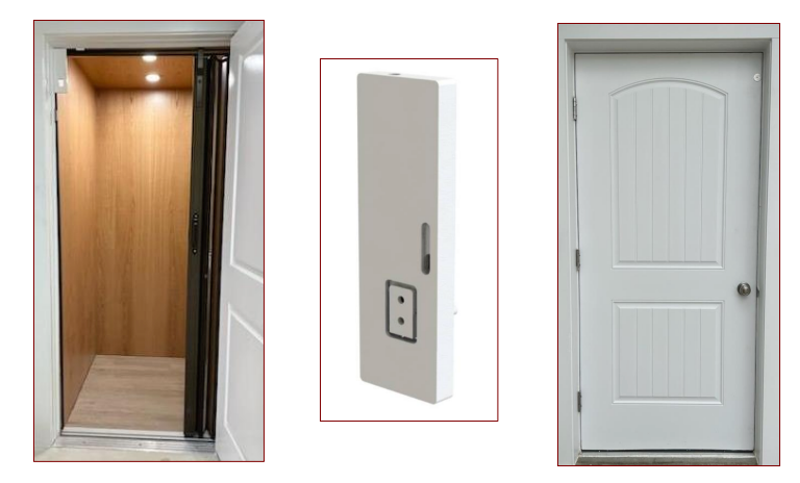
Home elevators boost property values, ensures safety, improve quality of life, increases transportation ease, saves time, conserves energy, and occupies less space. Yet, if they don’t comply with the latest safety codes, their existence becomes more of a detriment. Luckily, the creation of the world’s thinnest elevator lock for home elevators made non-compliance a thing of the past.
Designed to be ultra-slimline, the elevator door lock solves the ¾” rule enacted by the ASME A 17.1-2022 and the CSA B44-2022 safety code.
Ensuring Compliance
The ASME A 17.1-2022: Safety Code for Elevators and Escalators (CSA B44-2022 in Canada) is the basis for the design, build, installation, operation, testing, maintenance, inspection, alteration, and repair of dumbwaiters, elevators, escalators, material lifts, and moving walks across the country. It also covers their associated parts, spaces, rooms, and hoistways. And since elevators make 18 billion passenger trips every year, it’s imperative that such safety standards are adhered to — residential applications included.
The key concern is always safety, but the codes don’t stay the same year-over-year. Instead, there are yearly revisions to ensure all constructions are up to date and safe for people to use. After all, the safety code for elevators is over one century old, so revisions are necessary to keep up with the ever-evolving technological landscape.
Continuing the alteration tradition, the 23rd edition of the code features a myriad of revisions. Some of the most important changes include the following:
- The addition of cybersecurity requirements.
- The addition of remote interaction and test enable operation requirements.
- The update of elevator flood protection, door position monitoring on Phase II, and the alternate testing of emergency braking.
Despite all the equally important additions and revisions set out in the latest iteration of the ASME A 17.1-2022, one stood out to the residential elevator market in particular — the ¾” rule.
Solving the ¾” Rule
The ¾” rule is specific to residential elevators and refers to the gap between the back side of the door and the elevator shaft, which begins at the sill of the landing door. As the rule states, the gap cannot be larger than ¾”.
The reason? Safety. Larger gaps leave too much room for avoidable harm of life and limb. For instance, gaps of five or six inches could allow enough room for a child or pet to be inside, which is a dangerous position for anybody to be in if the elevator begins to move.
In the past, the codes dictated a three-inch rule. While there were a few locks that fit this mold, there aren’t so many that can cope with the newly enacted smaller gap.
Complying with this rule involves a thin locking system to negate the use of bulky mechanisms that would force the elevator into non-compliance. Therefore, the slimline elevator door lock was ingeniously crafted, allowing residential elevators to adhere to ASME A 17.1-2022 and look seamless in the home.
Sitting at a miniscule 0.6 inches wide, the lock fits easily into the allotted gap, while still holding the necessary components, which are as follows:
- Three different switches that tell the controller whether the door is closed or latched.
- The mechanism which lets the lock function and holds the door shut when necessary.
The innerworkings are simple and the construction is high-quality to ensure the optimum fit in any residential elevator.

Door Closed/Door Locked Monitor
The purpose-built slimline lock holds the elevator door shut when the elevator isn’t there or it’s in motion, and tells the elevator controller (i.e., the “brains” of the contraption) whether the door is open or shut.
Like its ability to comply with the relevant codes, this feature promotes safety, ensuring nobody steps out into an empty shaft.
Conclusion
In prioritizing home elevator safety, homeowners are not only safeguarding their physical well-being but also enhancing their overall quality of life. By implementing these crucial measures, families can confidently enjoy the convenience and accessibility an elevator provides. Remember, safety is not an option—it’s a necessity, ensuring peace of mind for everyone who calls the residence home.




